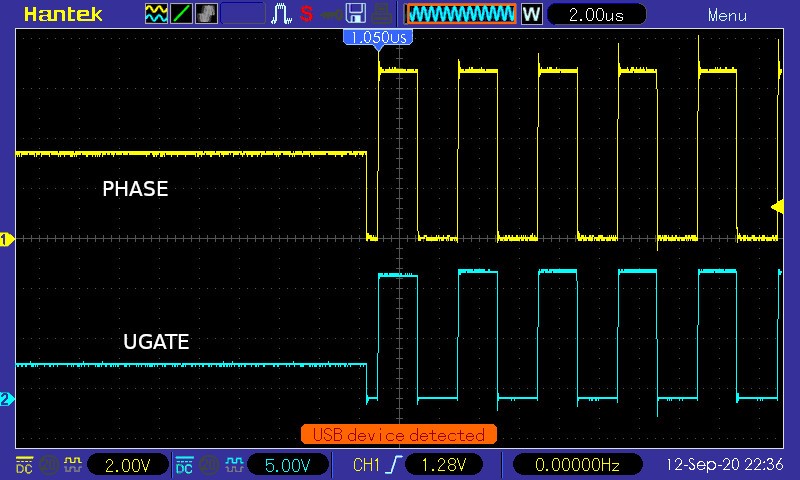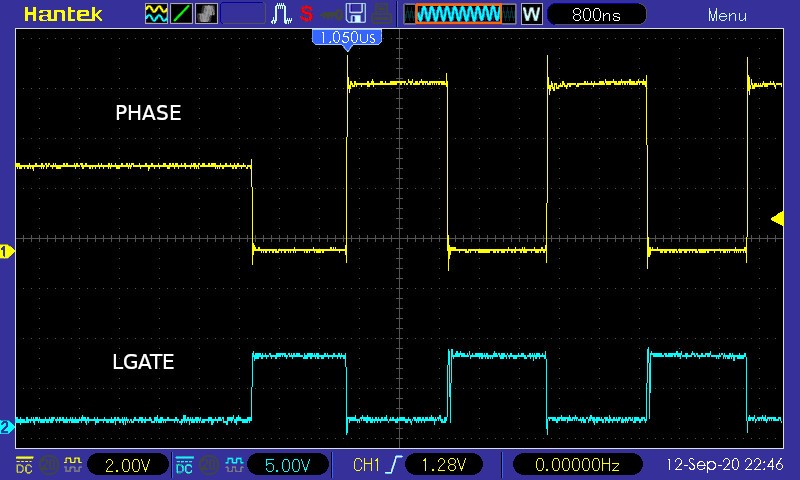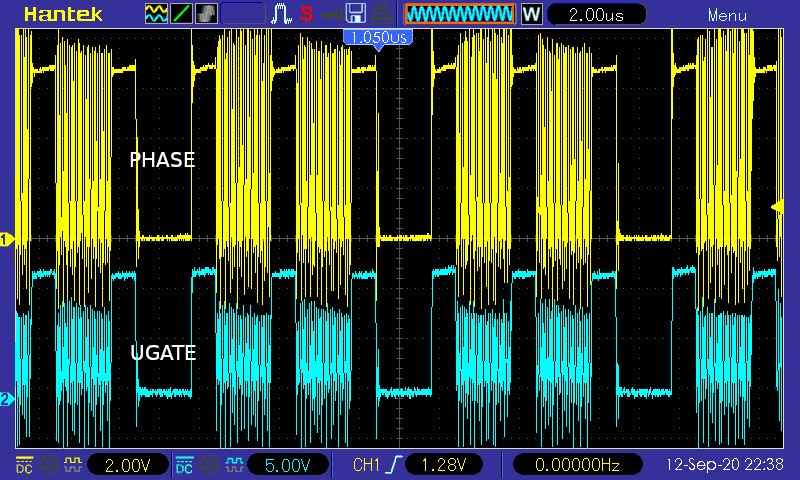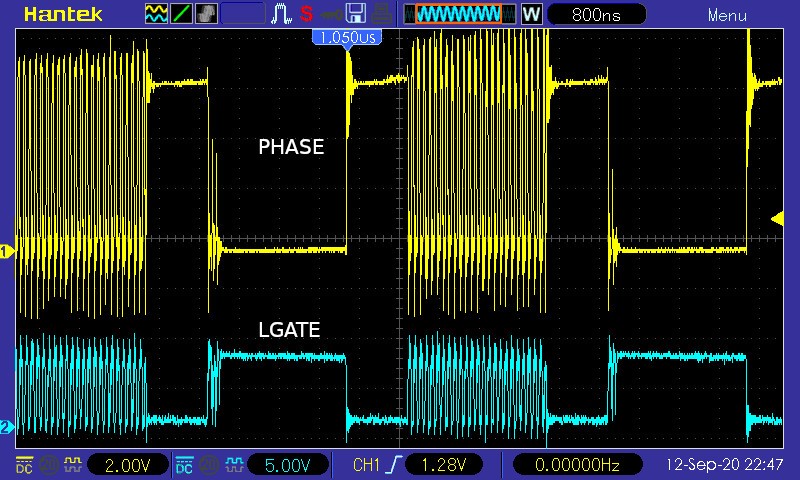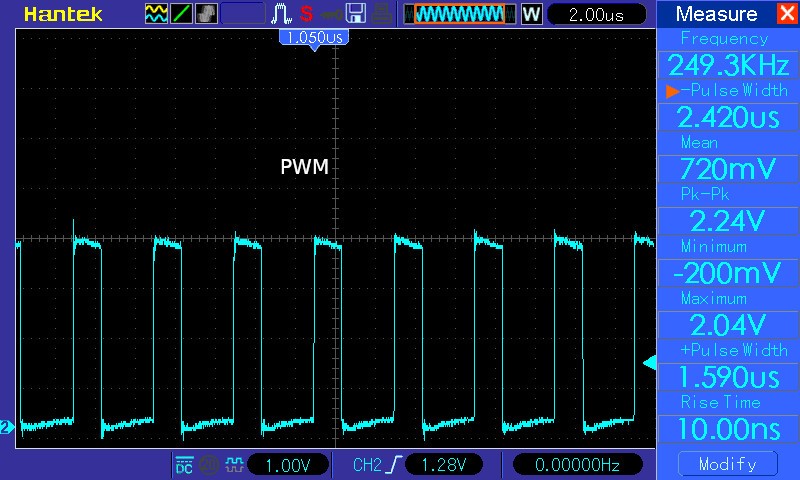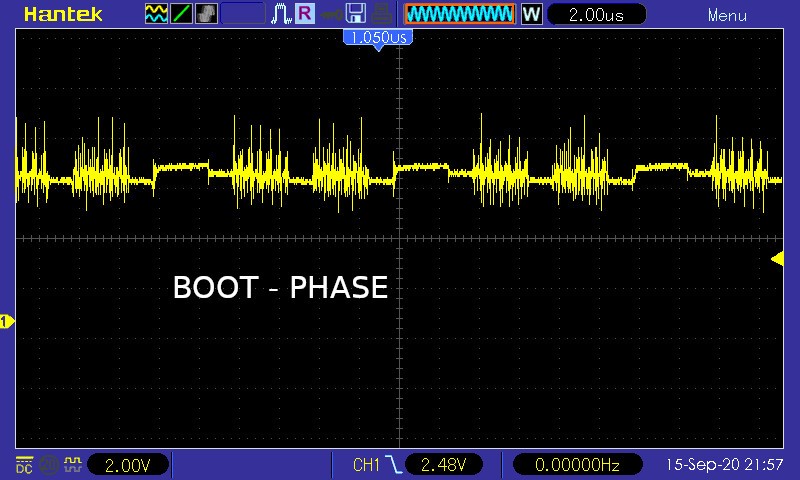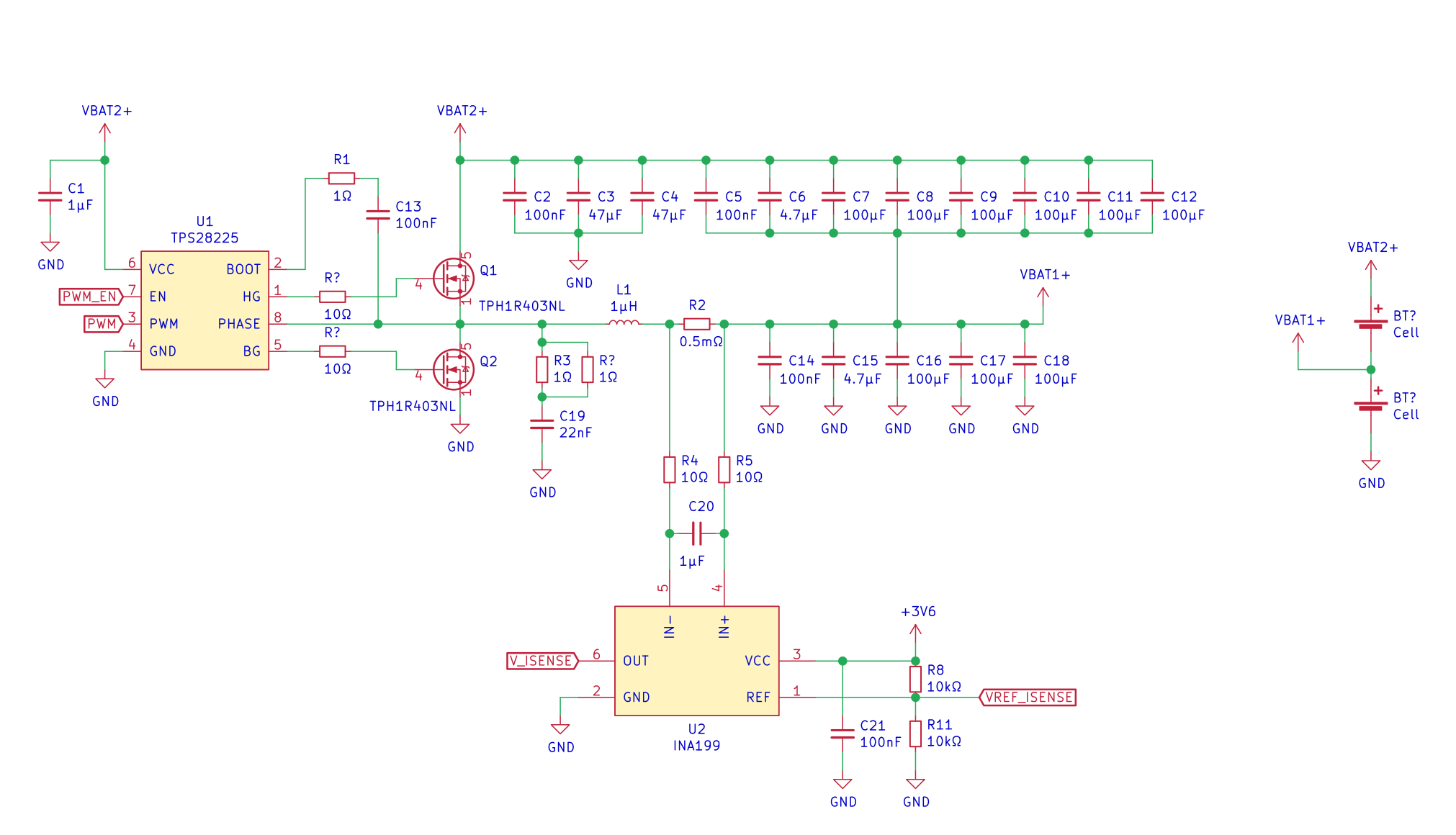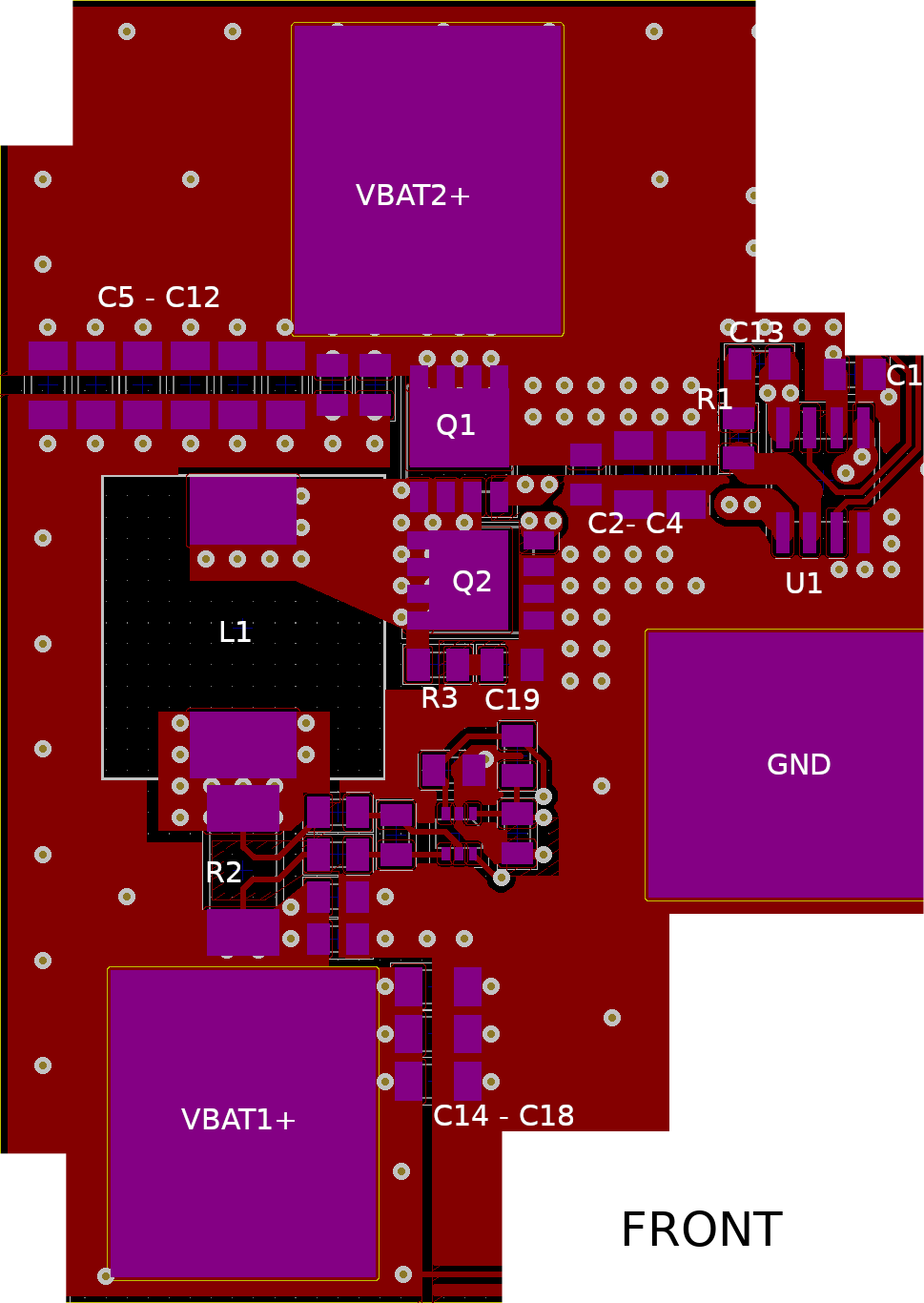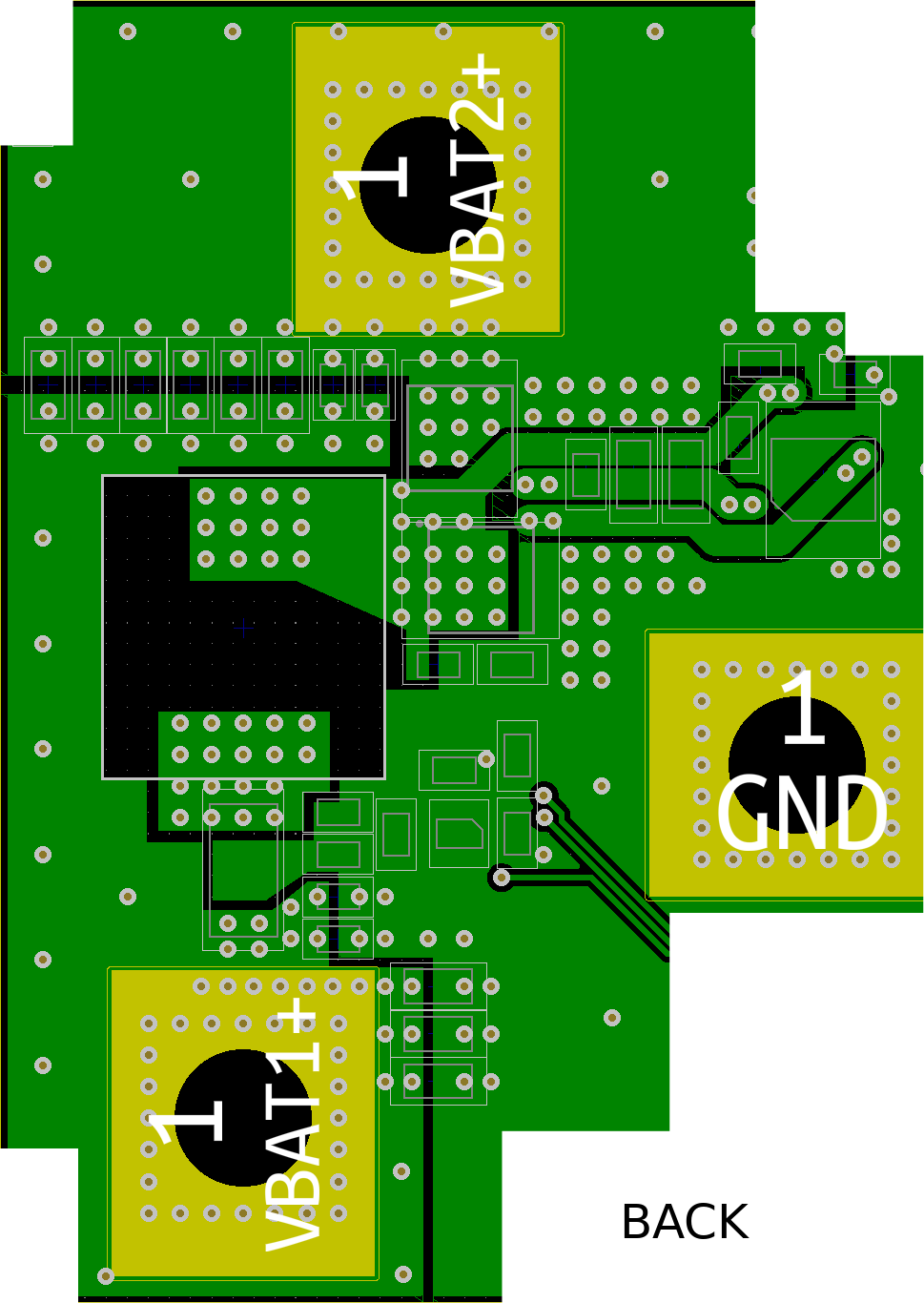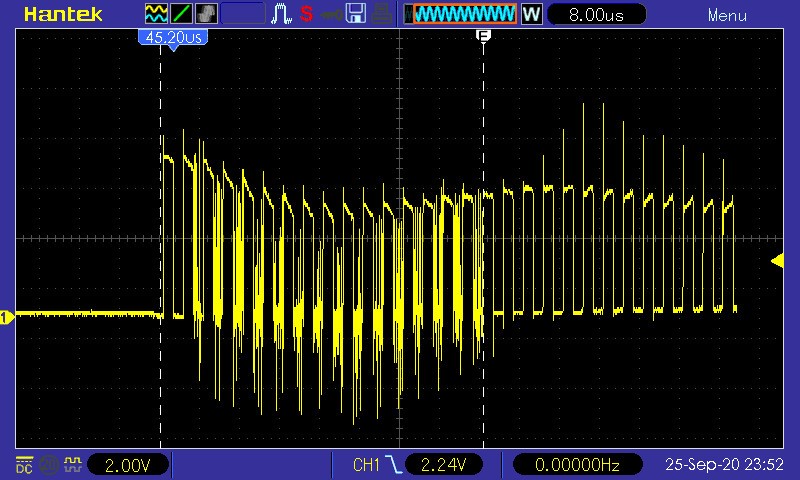Other Parts Discussed in Thread: CSD17556Q5B
I am using the TPS28225 to drive two n-channel mosfets to balance two series lithium battery packs in a sort of buck-boost configuration. Here is the simplified schematic: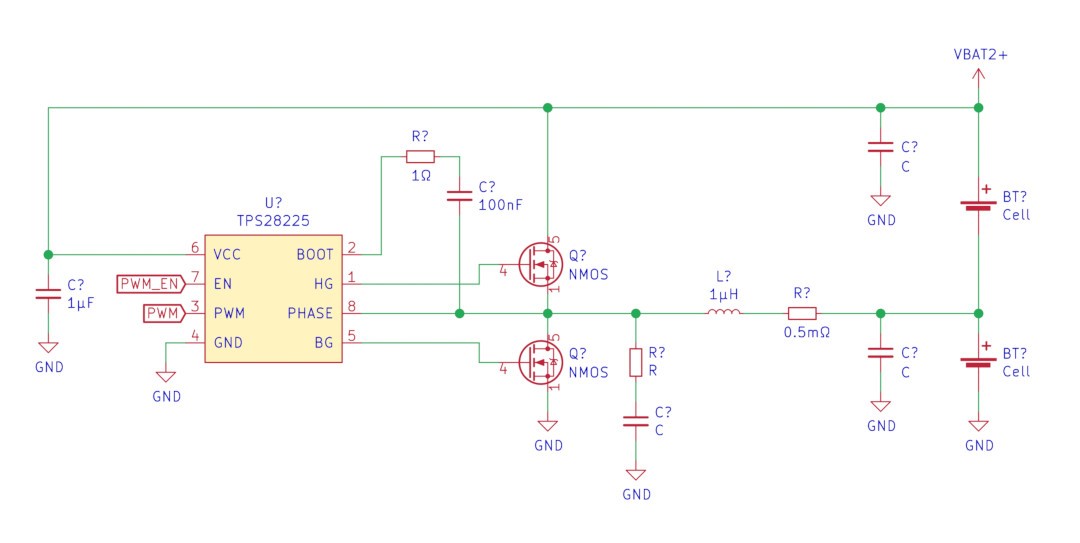
In testing the circuit at a 50% duty cycle the circuit worked as expected but as the duty cycle decreases and the current ramps up to around 5 amps the driver was outputting some bizarre waveforms and audible noise. The following waveforms were taken whilst the bottom cell was transferring current to the top cell (boost configuration). The duty cycles starts of at 50% and then decreases to about 35%.
Everything looks fine so far..
Then the gate driver start outputting some high frequency switching.
I checked to make sure the PWM input wasn't doing anything weird and it seemed fine, the EN/PG pin was also steady at 3V.
I initially thought that I had damaged the driver from switch node ringing so I swapped in a new driver and added an RC snubber with the same result. My new guess is it has something to do with having a pre-biased output.
Any suggestions would be greatly appreciated!


